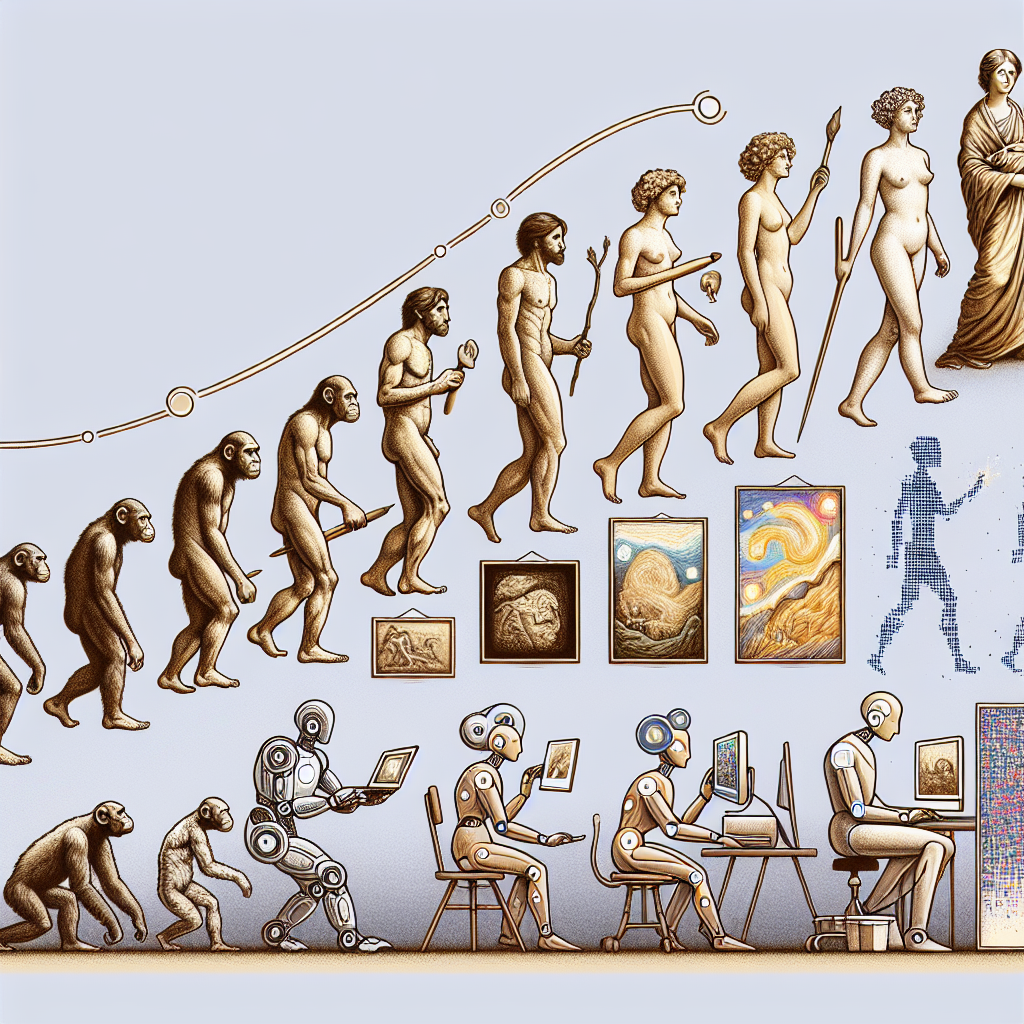Unveiling AI’s Artistic Evolution: A Journey Through Time

“`html
Introduction
Artificial Intelligence (AI) has permeated almost every facet of modern life, revolutionizing industries and transforming the way we interact with technology. Among its many applications, AI has made significant strides in the realm of art, where it has both challenged and expanded the boundaries of creativity. This article explores AI’s artistic evolution, tracing its journey from rudimentary beginnings to its current sophisticated state, and speculating on its future potential.
The Dawn of AI in Art
The relationship between art and technology is not new. Throughout history, artists have embraced new tools and mediums to express their creativity. The introduction of AI into the art world marked a pivotal moment where machines began to play an active role in the creative process.
Early AI art experiments in the 1960s and 70s were primarily focused on computer-generated graphics. Pioneers like Harold Cohen developed programs such as AARON, which was capable of creating drawings autonomously. Despite their simplicity, these early attempts laid the groundwork for future advancements by demonstrating that machines could indeed produce art.
The Rise of Machine Learning
The advent of machine learning, a subset of AI, brought about a significant shift in how computers could contribute to art. Machine learning algorithms, particularly neural networks, enabled computers to learn from data and improve over time. This ability to learn provided the foundation for more sophisticated artistic endeavors.
One of the most notable developments was the introduction of Generative Adversarial Networks (GANs) by Ian Goodfellow in 2014. GANs consist of two neural networks—the generator and the discriminator—that work in tandem to create new data. In the context of art, GANs can generate images that mimic a particular style or create entirely new artistic expressions.
AI as a Creative Partner
As AI technology advanced, artists began to view AI not just as a tool, but as a creative partner. The collaboration between human artists and AI has led to the creation of works that neither could produce independently. This partnership challenges traditional notions of authorship and creativity, prompting discussions about the role of AI in the artistic process.
Artists like Mario Klingemann and Sougwen Chung have embraced AI as a collaborative partner. Klingemann, for instance, uses GANs to create art that blurs the line between human and machine authorship. Chung, on the other hand, incorporates robotic systems in her performances, creating a dialogue between her brushstrokes and the movements of a robotic arm.
AI Art in the Mainstream
The growing interest in AI art has propelled it into the mainstream art world. In 2018, an AI-generated portrait titled “Portrait of Edmond de Belamy” was auctioned at Christie’s, fetching over $432,000. The sale marked a significant milestone, signaling a broader acceptance of AI-generated art in the traditional art market.
The integration of AI into the mainstream art scene has led to increased visibility and legitimacy for AI artists. Museums and galleries are beginning to showcase AI art, recognizing its potential to challenge conventional artistic paradigms and expand the boundaries of creativity.
Challenges and Criticisms
Despite its advancements, AI art is not without its challenges and criticisms. One major concern is the question of authorship. Who is the true creator of an AI-generated artwork: the programmer, the machine, or both? This ambiguity challenges traditional notions of artistic ownership and copyright, raising legal and ethical questions.
Furthermore, there is criticism regarding the originality of AI art. Some argue that AI merely replicates existing styles and lacks the ability to create truly original work. However, proponents of AI art contend that creativity is inherently iterative and that AI’s ability to learn and reinterpret can lead to novel artistic expressions.
The Future of AI in Art
As AI technology continues to advance, its role in the art world is likely to expand and evolve. Future developments in AI could lead to even more sophisticated creative collaborations between humans and machines. The integration of AI into virtual and augmented reality environments could open up new avenues for immersive and interactive art experiences.
Moreover, as AI becomes more adept at understanding and generating human emotions, it could play a significant role in creating art that resonates on a deeply emotional level. This emotional intelligence could enable AI to create works that are not only visually striking but also emotionally impactful.
Conclusion
AI’s journey through the art world is a testament to its transformative potential. From its humble beginnings in computer-generated graphics to its current status as a creative partner, AI has redefined what is possible in the realm of art. As we continue to explore the intersection of technology and creativity, AI will undoubtedly play a pivotal role in shaping the future of artistic expression.
While challenges and criticisms persist, the ongoing dialogue between artists, technologists, and audiences will help navigate the complexities of AI art. The future of AI in art is not just about what machines can create, but about how they can inspire us to see the world through new lenses. As we unveil AI’s artistic evolution, we embark on a journey that promises to redefine the boundaries of creativity and innovation.
“`



